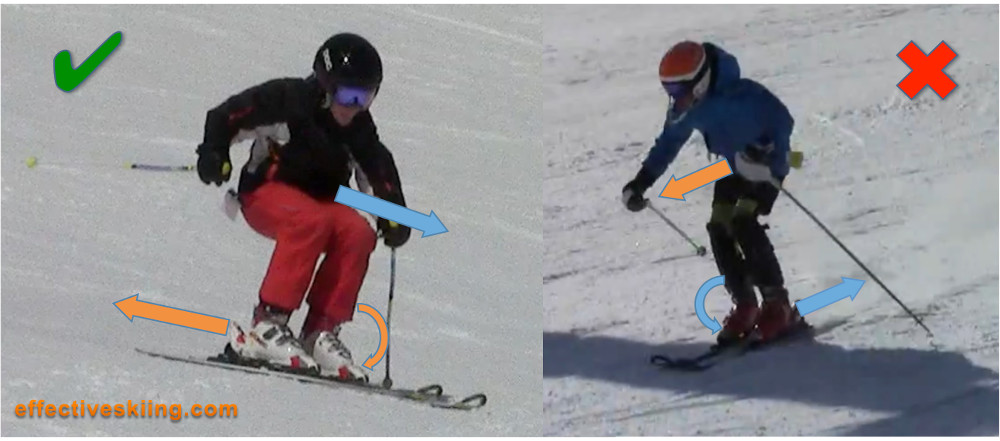Shin pressure
Pub
Share
A common cue in skiing is "shin pressure", referring to feeling pressure between the shin and the cuff of the boots - associated with "being forward". Although we think that the better way to look at it is to think "contact" as opposed to pressure, the phrase "shin pressure" is well established, so we'll look at it as such.
Internal cue
Shin pressure is an internal cue, based on what the skier feels - see External cues vs internal cues in skiing.
Shin pressure is indeed a common cue, that may get skiers to get forward, but it's not the most effective cue. As all internal cues, it is very subjective: how much is enough? How much is too much? When exactly and for how long should I feel it etc? Do I feel as much as you?
Effectively creating shin pressure
There are many ways to create shin pressure, although the main component of this is Dorsiflexion i.e. closing the ankle.
To see more on this topic, you need a membership. (Gold)
When?
A strong focus on shin pressure may cause an unwanted effect, of getting skiers locked up, jamming most turns and unable to actually ski. I see it every day in race training... while, unsurprisingly, the results are that most are sitting back and ski poorly in a misguided effort to get forward!
Leverage
The notion of shin pressure associated with pressuring the ski tips may create the impression that we're meant to leverage the boot cuffs to dig the ski tips into the snow. That's not true. A skier does not have to bend the boots to apply sufficient ski tip pressure - however, ski tip pressure is a much more likely result when the shins contact the tongues inside the boots.
Can we pressure the ski tips from the back of the boots? Sure - for a moment, using a pedal motion, pushing down with the feet (and raising the heels).
Range of motion
When looking at Dorsiflexion, the range of motion is limited by the boot cuff and boot flex as well as body position (hips forward help bend the boots).
The range of motion becomes very limited once we do indeed get shin pressure - we can no longer move in that direction (i.e. close the ankle more) so we are, in effect, locked in that direction - we can't absorb unbalances or snow features (bumps etc).
All these disturbances will now be transmitted straight into the upper body and will disturb the balance.
Also, it is hard to release the skis properly, when we have shin pressure - as the ankles are locked by the pressure from the upper body.
Conclusion
It is a very subjective coaching focus and cue, but there are effective ways to deal with it, see Recentering and Fore-aft.
You need to log in to post a comment!

